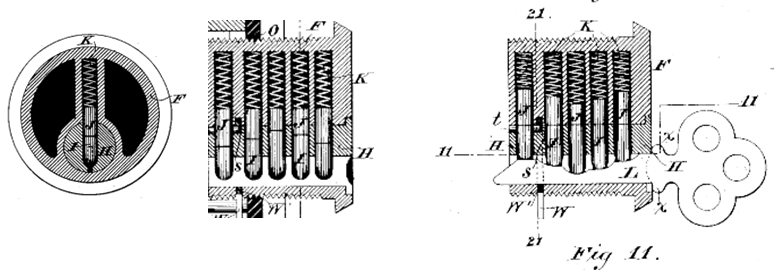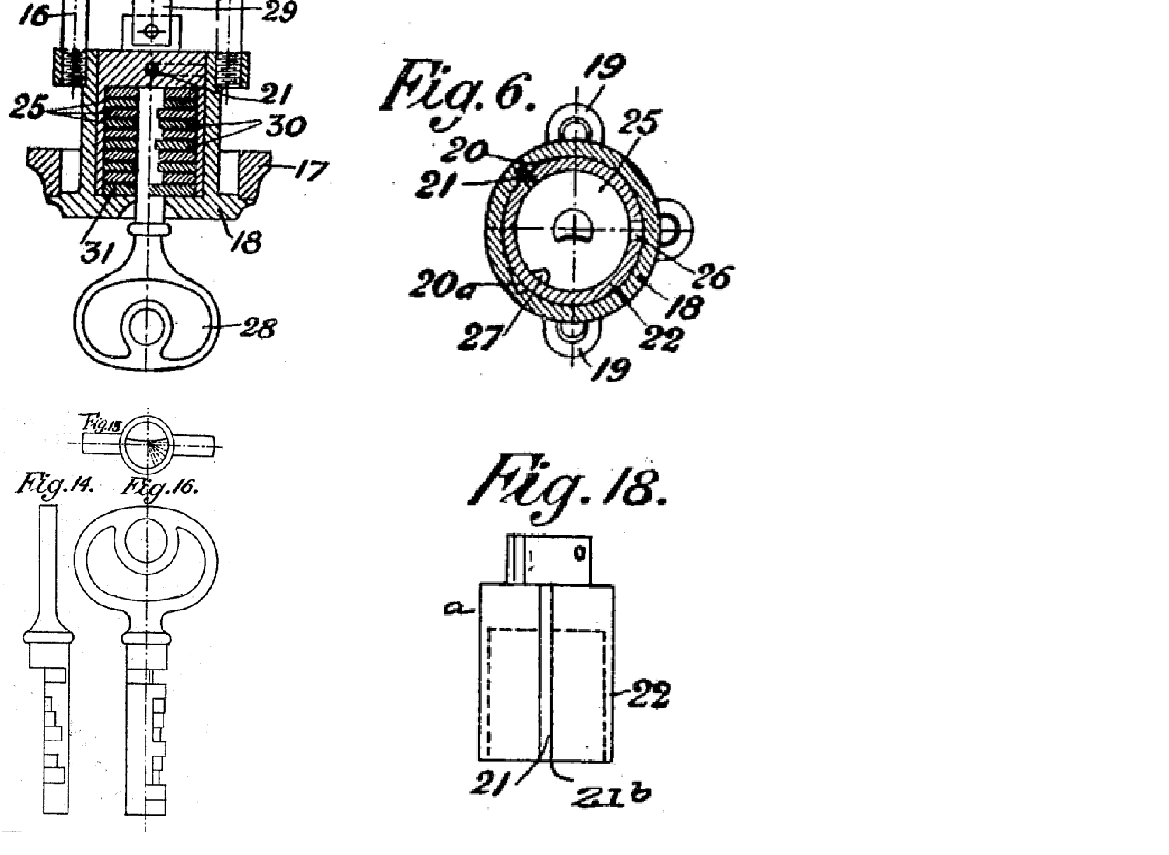September 25, 2019
The Abloy lock, an example of Finnish precision engineering ingenuity, is the invention of Emil Henriksson. Henriksson discovered that the mechanical principle of counter-plates rotating in a cash register cylinder can also be applied to locks. His invention was patented both in Finland and internationally.
Chaining up an escape artist. Once there’s enough steel wrapped around a person to prevent them from moving at all, the chains are fastened together with a single lock. The escapologist takes a single breath before being submerged in a water tank. Just one breath to pick the lock. As the seconds tick away, he struggles to free himself. The lock won’t open.
For the last 110 years, Abloy locks have been almost impossible to pick.
We asked Tapio Äkräs, Kolster’s Director of Patents, just how significant an invention the Abloy lock is.
Without doubt, the Abloy lock is one of the most important Finnish inventions of all time. It’s part of most people’s everyday – perhaps as a door lock at home or at work. In addition to the many modern locks Abloy produces, the classic Abloy padlock’s iconic appearance is world-renowned.
A precision mechanic by trade, Emil Henriksson, patented the basic idea behind his Abloy lock at the turn of the 20th century, and the lock came to seize the market almost immediately thereafter.
The new lock mechanism, the so-called disc tumbler lock, made it possible to make an unlimited number of different kinds of keys that were very difficult to copy. Henriksson’s idea was exceptional. So much so that the disc tumbler cylinder lock has retained its place as one of the best locking mechanisms for more than a century since it first hit the market.
What kinds of locks was the Abloy competing with when it was first launched?
In the early 20th century, the leading lock manufacturer was the American company Yale, whose lock was based on a pin tumbler cylinder mechanism. It remains one of the most common forms of lock available today.
The principle behind the cylinder was simple – in the locked position, the inner cylinder within the outer cylinder is prevented from rotating by a set of two-piece, tumbler pins. When a key is inserted into the lock housing, the tumbler pins move to different positions according to the grooves on the edge of the key. If it is the right key for the lock, the upper parts of the two-piece tumbler pins fit inside the outer cylinder and the lower parts fit inside the inner cylinder, with no pin preventing the inner cylinder from turning with the key. The lock can now be opened. Nevertheless, copying keys and picking locks was not that hard to do.

The Yale lock (Source US patent 8158)
How did the patenting of the Abloy lock get under way?
Emil Henriksson had invented a completely new kind of cylinder lock that was not only more secure but also cleverly designed to around the patent coverage of the prior lock mechanisms. It was perhaps Henriksson’s background experience in precision engineering that led to him to develop a totally new type of lock mechanism. He had previously repaired many kinds of specialist equipment such as cash registers.
Disc tumbler cylinders were used in some of the cash register designs for calculation operations. Henriksson cottoned on to the idea that this principle could be also applied to lock cylinders.
He set about refining his basic vision and, following several iterations and the passing years, he was ready to apply for patent number FI7230 with a title “Henriksson Patent Lock” for his security lock in 1919. The patent protection was extended in the same year to several other countries, including the USA (US Patent 1515318). Eventually, Henriksson established the AB Lukkotehdas Oy factory. The name of the product the Abloy lock - is an abbreviation of the company name. The Abloy brand was also protected by several trademarks.
What characteristics best sum up the Abloy lock?
The classic Abloy locking mechanism combined a lock cylinder (22) and a series of tumbler discs (30) can individually rotate about their mid-point within the lock cylinder. At the centre of each tumbler disc is formed a semi-circular groove (28) into which the key of a semi-circular cross-section is inserted. In addition, each of the tumbler plates (30) has a recess (26) at a specific point on its periphery. The tumbler discs carry a lock bar (21) in a groove (20) of the lock cylinder (22) thereby preventing the lock cylinder from rotating within to an outer cylinder (18).
Recesses are machined into the key (28). As the key is inserted and rotated in the lock, each tumbler disc plate turns to a degree determined by its recess. If the key is the correct one for the lock, the recesses of all tumbler discs (30) are aligned so that the locking bar (21) can fall into the recesses from the groove of the lock cylinder (18) and the lock cylinder can rotate freely within the outer cylinder (18). If the wrong key is inserted and rotated in the lock, the recesses of the tumbler discs don’t line up. The lock bar remains in the lock cylinder’s groove and the lock won’t open.

Abloy locking mechanism (Source US patent 1515318).
Main image: Abloy lock factory in Joensuu in 1976 │by Jaakko Julkunen, HS, Lehtikuva
What about today's digital locks?
Could an electronic lock work with the electricity generated from the kinetic energy of the key? This pondering gave rise to another Finnish success story and the lock pioneer iLOQ.
To celebrate Kolster’s 145th jubilee year, we feature each month an interesting Finnish invention or patent.
Azipod® thruster – a pioneer in the marine industry
ALD technology – an invention in the pocket of every Finn
Kohonen map – enabler of self-learning artificial intelligence
AIV fodder – the cream of the crop of Finnish inventions
The sauna stove – Evolution from a pile of rocks to a designer product
Heteka - an iron bed that became a bestseller of its day
Kolster’s first patent served the paper industry
